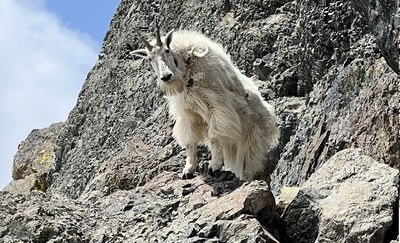
Trip Report
Perfect Conditions at Ingalls Peak/South Ridge
Epic climb with perfect conditions on the snow, and rock. Supported by an amazing team where everyone contributed to high moral, decision making, route finding and positive attitude.
- Sat, Jun 14, 2025
- Basic Rock Climb - Ingalls Peak/South Ridge
- Ingalls Peak/South Ridge
- Climbing
- Successful
-

- Road suitable for all vehicles
-
- Road passable by most vehicles that can handle potholes and wash boarding.
- Trail to Ingalls pass in amazing condition. Heavy Snow at Ingalls Pass
- Ingalls Pass to Start of the climb. Snow most along the path, varied depth from a ~foot to 10+ feet in the Gully to base of pitch 1.
- Climbing route perfect condition.
- New 7mm cord at big boulder at the top of pitch 1
- Reinforced with 7mm purple cordelette (orange+blue electrical tape) top of pitch 2
- New 6mm? Red Cord at pitch 3 and pitch 4.
- Note I reinforced rappel anchor with blue cord (orange+blue electrical tape) at pitch 3
- Hangers in perfect condition
- Serpentine Rock = Slick like wet glass
This climb was the first Mountaineers trip of Ingalls Peak South Ridge of 2025 and had been scheduled at least 5 months in advance. For almost everyone of us on this trip it would mean marking off a "wishlist climb" as those that look at the awe inspiring views of the climbing route are memorized by the beauty of this epic climb.
Pre-attempt on 06/06/2025
I am a believer that as a climb leader one shouldnt take new basic students up an alpine climb that you shouldnt have at least direct exposure to previously. Having never actually climbed this route myself I actually set off with my best friend and fellow 2017 basic climbing graduate (mad shout out to Dom!) a week before. At the time the conditions were similar with at least 6-10 feet more snow along the approach route. However with a heatwave between these climbs it meant that more snow melted out (see pictures). This climb a week before didnt actually result in a summit as we were forced to bail at the start of pitch 3 due to sustained winds between 17 and 34 MPH. See (and hear) our climbing video of that attempt. While we were two pitches and 180 feet away from the summit, on a blue bird day, there were too many variables due to the high wind that made it easy to call it a day. After all that main attempt gave me enough beta for the approach and climb that I felt comfortable coming up a week later with basic students.
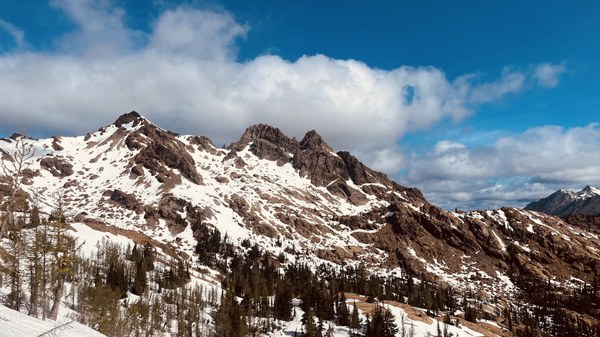
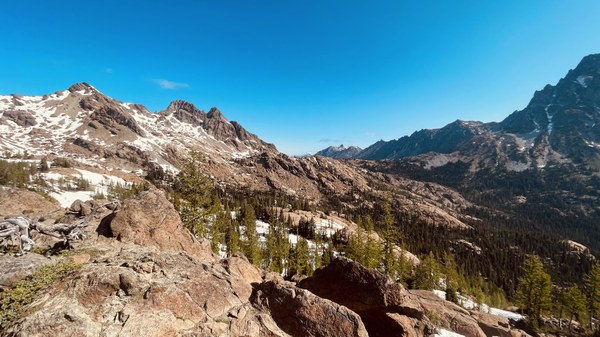
Planning
5 days prior for our real climb a situation started to unfold. I had sent an email out to the team indicating the following:
Team As we approach this weekend's climb date, I wanted to provide an important update regarding current conditions.
The weather forecast for Saturday shows sunny but cold conditions, which would typically be favorable for our climb. However, our primary concern is the Red Bridge Fire currently developing near Cle Elum, adjacent to Teanaway Road [see fire map]. With Level 3 evacuations in place, this fire will likely block our only access route to Ingalls Peak unless it's brought under control soon.
Jared and I are actively researching alternative climbs that could serve as a backup plan.
ProTip: Per Jared InciWeb is the best resource for all fires in the US.
Jared and I would go on communicating back and forth about what we were seeing in terms of fire progress, weather and having two additional backup options to climb if Ingalls was going to be called. By Thursday the fire became 60% contained, and then by Friday afternoon it was over 90% giving us the green light for the climb. As I would learn having solid backup plans in advance of Plan-A we climb here, Plan-B we go to another Climb, and Plan-C we go to a different place.
Climb day 06/14/2025
We all met at 7:00AM PST at the the Lake Ingalls Trailhead https://maps.app.goo.gl/fQs2v3WJRKA4GudPA . Once there we gave two twin 60M ropes and one 70M rope. Having only two leaders and three basic students the plan was that I would take two with me and Jared would take one climber (on the 70M). After a quick briefing, ensuring everyone had the right gear, first aid kits, helmets etc... we set off on the trip stopping at the trailhead to get a daypass for the trip. Unfortunately we did have to do a safety briefing regarding a law enforcement manhunt in the Enchantment area and what to do if we encounter the individual. Then we set off by 7:30AM. Right out of the gate my team (following previous instructions) moved me back from the front of the line as I accidentally set a 2.9MPH pace and we then took turns letting others take the lead as we all chatted with each other at a very comfortable 2.2MPH hiking pace. About 1 hour and 40 minutes later around 9:10AM we were standing on top of Ingalls Pass.
From this vantage point it allowed us to survey the approach and this is where I had learned that there was significant snow melt from the week before. We chatted as a team and discussed we would make our way over easy terrain past the area of the pit toilet where we could clearly see the marked trail emerging after a deep slumber from the snow. From there we should work our way around to about Lake Ingalls proper to find an easy ascent route to the gully of the climb. Jared and I spoke about our ascent options given that he had been on this actual climb 3 times previously. As Jared said all paths up go to the climb. As we moved around towards the Lake we still encountered patches of snow until we arrived at the slabs that would take us higher. Per Jared advice we would follow the path of least resistance up the slabs and I would try to minimize our time on the snow going up since the slabs enabled us to move a bit faster. The approach route that we took was different than the path I took the week before and in the end as Jared indicated all worked. We basicallystuck mostly to this track. https://www.peakbagger.com/climber/ascent.aspx?aid=2222312 At about 6,900 feet we put on helmets due to rockfall hazards, a group above us on the scramble route and ice axes came out (any of which would require the use of helmets) and we dropped into the gully itself for the final approach to the start climb where we found a comfortable spot at the base of pitch-1.
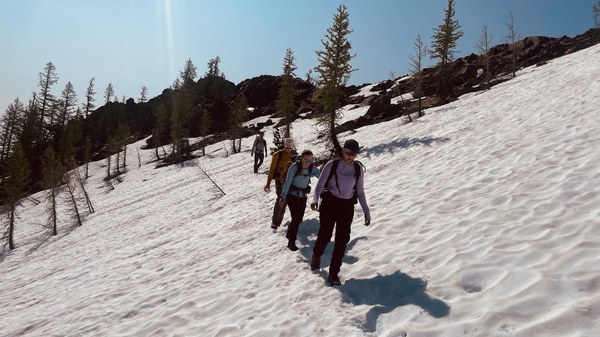
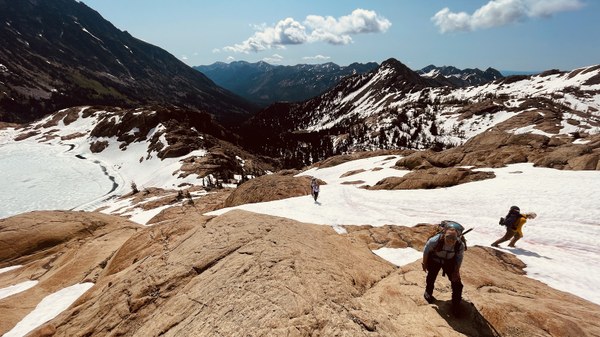
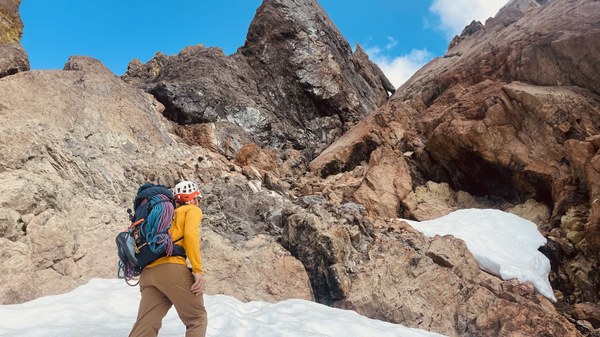
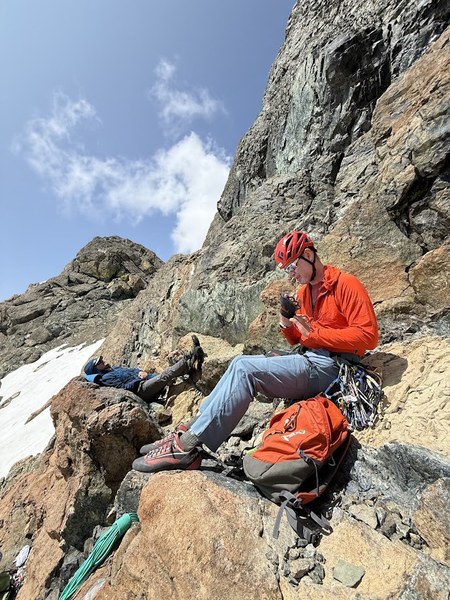
From here we let a party go in front of us, and myself leading and my two other climbers climbing in a party of three would take off while our party of two would bring up the back. Climbing on pitch-1 was uneventful minus the introduction of unexpected spots of Serpentine which was like hitting black ice on a sunny day. Some people suggested they could scramble around the left side of this pitch to avoid climbing pitch-1 altogether. While this is an option (and something I had done a week before) having done both now I would totally opt for doing the climb on pitch-1 as its really easy, a great warmup for the climbing to come. Plus finding unexpected spots of serpentine slipperiness made for pitch-1 to be great overall.
The short section of pitch-2 was more of an easy scramble that I ended up placing one small blue totem in the final 15 feet or so of the pitch to protect one move. From this giant ledge at the base of the slab, it allowed all of us to get a real vantage of the actual heart of the climb itself while the party in front of us were finishing that pitch. Two choices presented itself, the 5.4 left side, or the 5.6 middle crack. I had debated which I would end up doing. The left crack while it was "5.4," recent reports indicated the rock was getting slippery due to use, and mid way up there would be some winding involved to get to the bolts. I opted to take the 5.6 crack as it was more direct and would have a fun face traverse to climbers right before doing a half-moon and rejoining the middle of the wall again. The climb to hangers on pitch-3 was enjoyable and fluid. The crack was massive in parts accepting nutts of any size and a wide range of cam sizes, and Totem cams loved this crack. Placements were more than plentiful. Climbing was enjoyable, hand and feet placement inside the crack were plentiful and in the words of Steve McCarthy "this is fun" and "this is just fantastic!" Dont be worried if your not a great crack climber (like me) as with the angle of this climb, you dont need to be solid in this discipline to make this climb look easy. The only challenge (if you even want to call it that) is that the last fourth of the pitch it starts to get pretty thin. Smaller cams (black totems, or smaller gear) protect well. Face climbing is an option in spots before finally making it up to the small ledge that can easily accept three people.
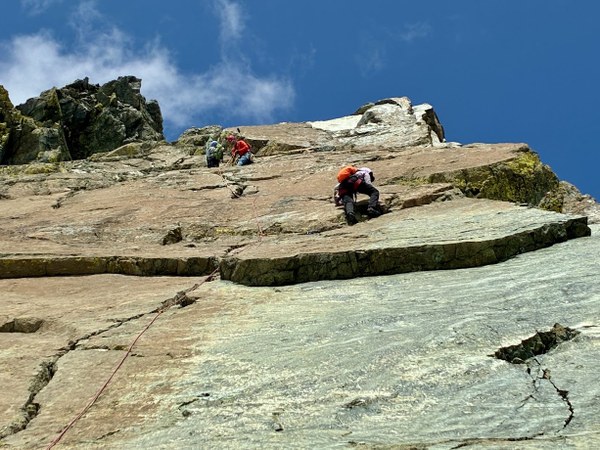
Pitch-4 was also easy and a great way to finish the climb. Do note at the start there is an old piton above the pitch-3 anchor that shouldn't be trusted. Its neat, well worn, rusty and does come out about half way. Summit Post has some amazing accurate beta especially as it pertains to the last pitch (they call pitch-3) and we basically followed this to the letter.
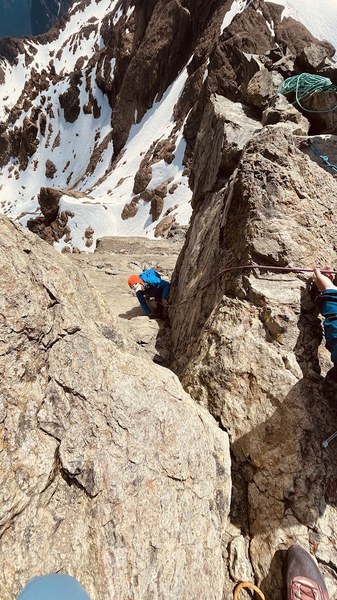
Topping out I brought up my other two climbers, we unroped and scrambled around the backside at the 1oclock position. There is a easy boot path to follow that takes you between two giant rocks standing as a gateway to the final summit. From there a small (10-15 foot section) 4th class scramble that had pockets of serpentine and great cracks to follow before hopping over the top and finding the summit register that must be 150% full. Then from there we down climbed while helping each other out through this section to get back to the rappel anchor at the top of pitch-4 and waited for the (now) two parties in front of us to finish rappelling.
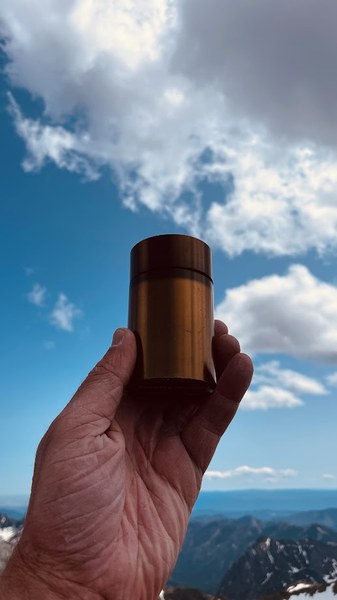
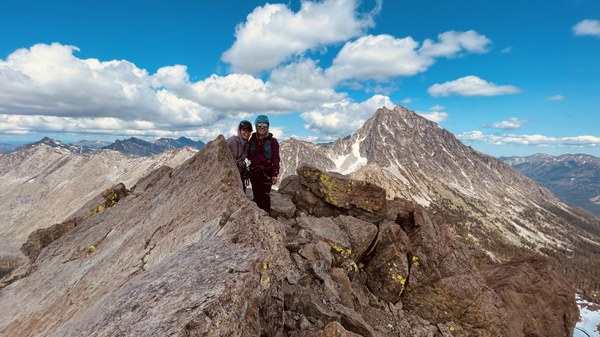
During this time we offered to help double check the last person in the party in front of us. Since their partner had already rappelled having someone double check all their systems were in place is a great opportunity to calm any nerves and ensure that everyone is safe before committing to the rappel.
Descent
Our plan of attack on the rappels would be that I would lead all rappels, with pitch-4 to pitch-3 using a 60M rope. I clove hitching the rope into the anchor to ensure climbers got to the anchor and close the system again. (no way to miss the next anchor now.) I would bring down the 70M and setup the rappel to get from pitch-3 to pitch-2. (there was enough rope to get to the next pitch with at least ~5 feet plus stopper knots to spare) The next person down after me would bring a 60M rope that I would take down for the rappel from pitch-2 to pitch-1. Finally the 70M rope brought down by the last climber would be used to get from pitch-1 to the base of the climb. (see note in gear section below about the final rappel) This would end up causing a bottle neck at the top of pitch-1, but the ledge there is large enough to hold a small birthday party (while anchored in of course). With 5 climbers over the course of 4 separate rappels it took us about an 1 hour, 35 minutes to complete the rappels once we started. I credit this to having a great plan that was communicated to all the climbers and backed up by the support of each other to ensure we were all successful and safe.
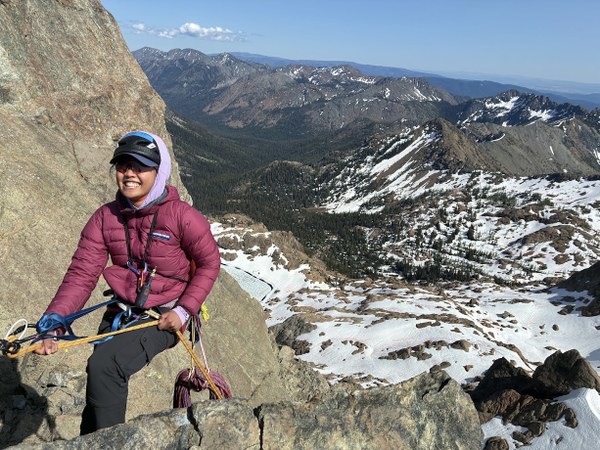
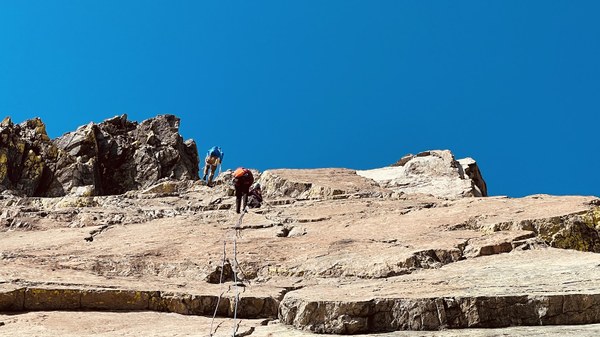
Once at the base of the climb we all got ready for our hike out, checking our watch it was 6:00PM right on the dot, at our designated turn around time we had established at the parking lot. From this point we made our way down the snow gully to the base of the climb. The snow conditions were amazing for plunge stepping with no one having any issues. Several hazards presented themselves with thin snow bridges that opened into deep holes, edges around exposed rocks with melted out that would lead into darkness. For the entirety of this descent we generally stayed in the middle, within arms reach of each other. Calling out when ever we found a deep hole and ensured each member passed those sketchy spots. I cannot complement our team enough on this level of communication and care they showed each other through this process. Every member of this team ensured everyone was safe and supported at all times.
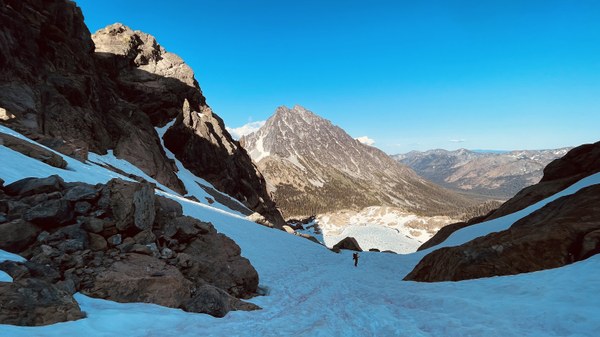
Finally at the base of the frozen over Lake Ingalls we regained the trail before retracing our steps back to Ingalls Pass, and finally our cars again.
Overall this was a truly amazing climb where everything seemed to go our way. We had a great team that made for the entire trip to be crazy successful without any hiccups minus the goat that stalked us at the base of the climb and someone suffering from a minor cut at the end because they thought they heard the goat coming again. Finally for my mentor Jared, whos partnership and communication throughout this entire process including the crazy week leading up the climb made for one of the best trips ever. I wish everyone could have the kind of climb we did on this day as it was truly rewarding.
And last but not least. Congratulations to Dimitri, Emily and Reine for knocking out your first rock climb towards basic graduation.
It was a great day to be a climber!!!
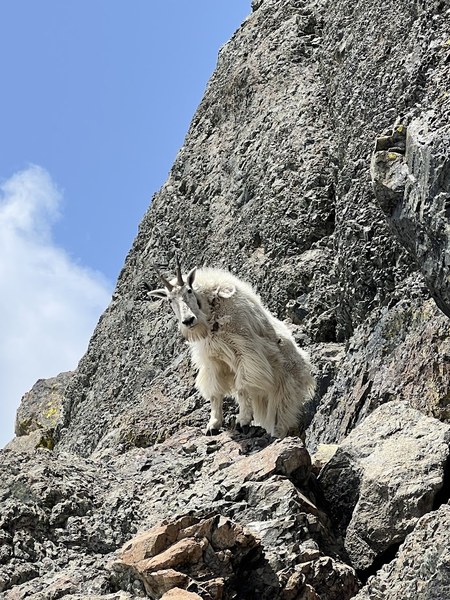
Climbing Videos
shot using an Insta360 x4 Camera
- Ingalls Peak South Ridge 06/14/2025 - Pitch 1
- Ingalls Peak South Ridge 06/14/2025 - Pitch 2
- Ingalls Peak South Ridge 06/14/2025 - Pitch 3 5.6 Crack (Slab Pitch)
- Ingalls Peak South Ridge 06/14/2025 - Pitch 4
Timeline
- Arrive at the Parking lot = 7:10AM
- Start Time (hit the trail) = 7:30AM
- Reached Ingalls Pass = 9:11AM
- 1 hour, 41 minutes
- Reached Start of the Climb = 11:10AM
- 2 Hours
- Started Climbing = 12:18PM
- Everyone topped out = 3:30PM
- 3 hours, 22 minutes
- Rappeling Start = ~4:10PM
- Finished Rappeling 4 pitches and = ~5:45PM
- 1 hour, 35 minutes
- Total decent (base of climb to car) = 8:40PM
- 2 hours, 40 minutes
- Total time (car to car) = 13 hours, 10 minutes
Overall I felt our time was fast, however understand that any attempt will involve being a long day.
Gear
- Standard rock climbing equipment to include rappel gear plus the following
- 1x 70-meter rope, 2x 60-Meter ropes
- A 70M is long enough to make it all the way down from the anchors at pitch-3 (slab pitch) to the top of pitch-2, and from the top of pitch-1 to the base of the pitch at skiers right (see picture)
- Rock Protection: Rope leads, single rack to 2” with stoppers.
- Water Filters: One is enough to share among the group
- Radios (2 way communication)
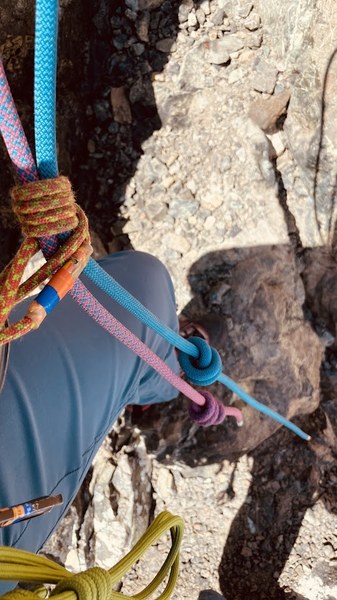
 Don Sarver
Don Sarver